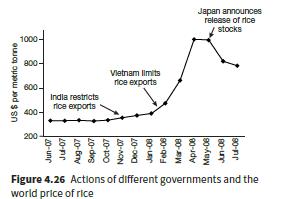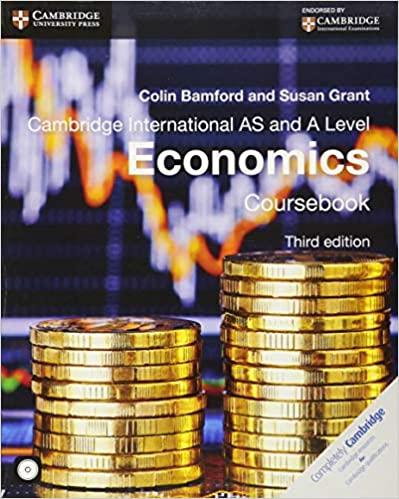Between January 2002 and July 2008 the world price of rice, a staple food for many people
Question:
Between January 2002 and July 2008 the world price of rice, a staple food for many people in developing countries, rose by slightly over 300%. As shown in Figure 4.26 the price of rice changed very significantly in the six months to July 2008 and was influenced by the actions of different governments.

The rise in the price of rice was typical of a wide range of commodities. These price rises caused food and fuel riots in developing countries. As a result some governments turned to protectionist trade measures. Vietnam limited rice exports while Cambodia and Egypt banned all rice exports. The Indian Government replaced the minimum export price that it enforced for non-basmati rice with a complete ban on rice exports. At the same time it placed restrictions on wheat imports for the purpose of disease control.
a. Calculate the approximate world price of rice in January 2002.
b. With reference to Figure 4.26, analyse the different causes of the price movements of rice from November 2007 to April 2008, and then after May 2008.
c. Explain two possible economic reasons for India’s introduction of export restrictions.
d. i. How might an effective minimum price for exports have helped India’s position?
ii. Why might India have changed from the use of a minimum export price to an export ban?
e. Discuss the potentially harmful effects of India’s protectionist trade policy for both its own economy and that of the rest of the world.
Step by Step Answer:

Cambridge International AS And A Level Economics Coursebook
ISBN: 9781107679511
3rd Edition
Authors: Colin Bamford, Susan Grant





